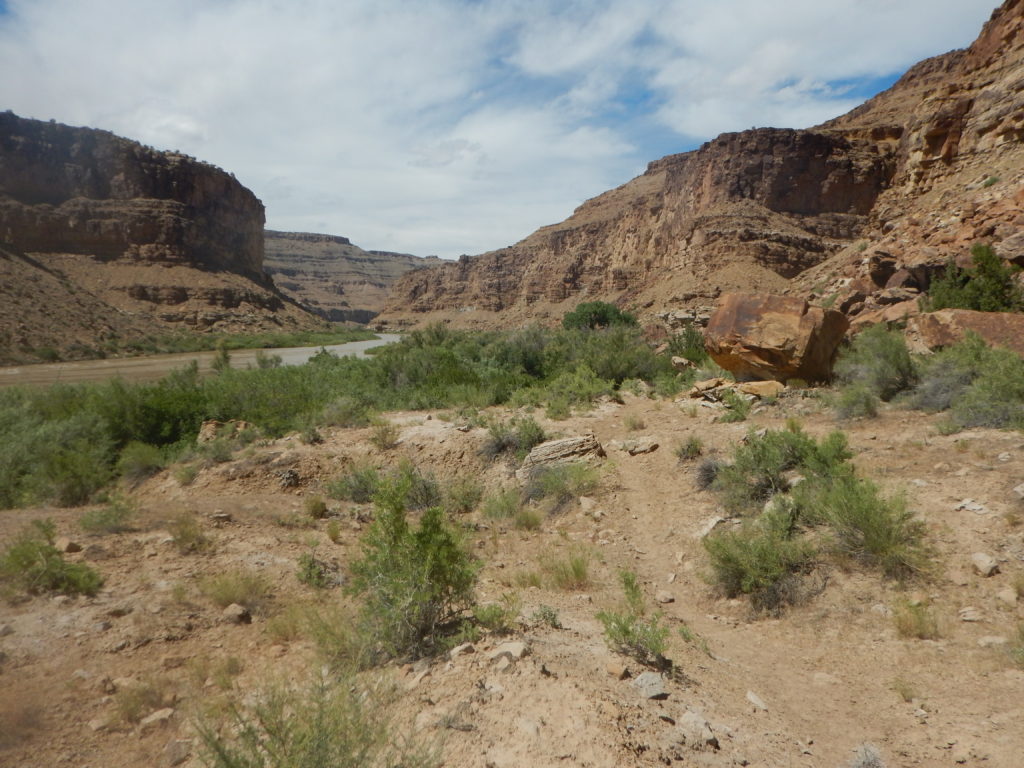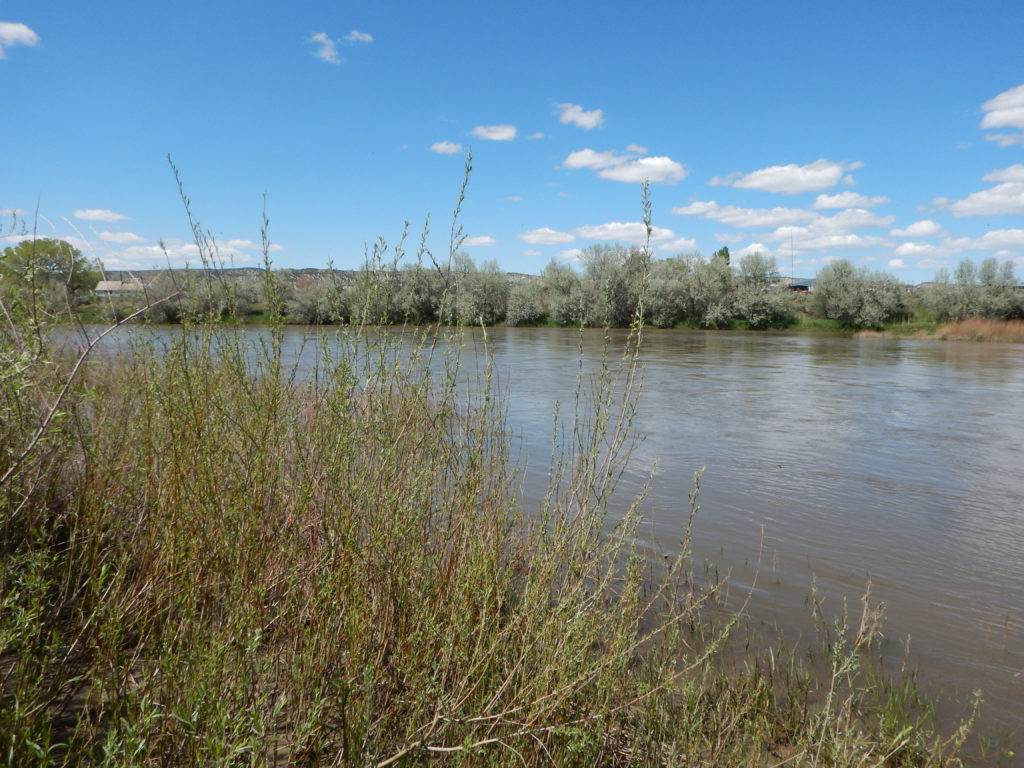
Improved maps and invasive species data for the CO River Basin
 The impacts of water diversion, invasive species, climate change, and growing human populations are ubiquitous across the Southwestern U.S. These combined stressors are putting enormous pressure on the Colorado River and its tributaries, and the effect on the basin’s water resources and hydrological processes is receiving a lot of attention from resource managers and researchers. Of particular concern are the impacts these changes are having on riparian corridors, which provide critical habitat for a diverse array of flora and fauna are important regulators of water and sediment flow in the river network. The Evangelista Laboratory group at the Natural Resource Ecology Laboratory (NREL) has recently provided scientists and resource managers working in the Colorado River Basin with two exciting new spatial datasets that improve of understanding of invasive species in riparian corridors.
The impacts of water diversion, invasive species, climate change, and growing human populations are ubiquitous across the Southwestern U.S. These combined stressors are putting enormous pressure on the Colorado River and its tributaries, and the effect on the basin’s water resources and hydrological processes is receiving a lot of attention from resource managers and researchers. Of particular concern are the impacts these changes are having on riparian corridors, which provide critical habitat for a diverse array of flora and fauna are important regulators of water and sediment flow in the river network. The Evangelista Laboratory group at the Natural Resource Ecology Laboratory (NREL) has recently provided scientists and resource managers working in the Colorado River Basin with two exciting new spatial datasets that improve of understanding of invasive species in riparian corridors.
These recent research efforts have materialized in two manuscripts. The first project, published in the ISPRS International Journal of Geo-Information this past September, provides a riparian vegetation and corridor extent dataset for the Colorado River Basin Streams and Rivers (CO-RIP). “This research was part of a larger project where we needed a reasonably accurate delineation of the riparian areas of the Colorado River Basin”, said NSF Graduate Research Fellow Brian Woodward, the lead author on the paper. “Going into this project, we hadn’t planned to create this dataset, but it didn’t take us long to realize that no existing spatial data product of this type was available that met our research needs. So, we decided to make it ourselves and share it with everyone.”
This realization led to a collaborative research process among 15 researchers, graduate students, and scientific support staff members from NREL, the US Geological Survey, and the NASA DEVELOP Program to create a Colorado River Basin-wide dataset delineating the extent of riparian corridors and riparian vegetation. Small parts of the Colorado River riparian areas have been previously mapped, but this dataset is the first to use a standardized process and definition to map riparian areas across the  seven states of the Basin (637,000 km2 ). “Our research and mapping framework is a great starting point for broad-scale riparian mapping efforts to be carried out across the country, but there is still a lot of room for methodological improvement. I hope that through the use of our methods and ideas, the availability and quality of riparian area datasets will continue to improve,” said Woodward.
seven states of the Basin (637,000 km2 ). “Our research and mapping framework is a great starting point for broad-scale riparian mapping efforts to be carried out across the country, but there is still a lot of room for methodological improvement. I hope that through the use of our methods and ideas, the availability and quality of riparian area datasets will continue to improve,” said Woodward.
In October, this group published another dataset on select tributaries of the Colorado River in Data, which provides over 3,000 species occurrence and absence locations for tamarisk and Russian olive along select rivers within the Colorado River Basin in Arizona, California, Colorado, Nevada, New Mexico, and Utah. Lead author, NREL doctoral candidate Anthony Vorster, says that the value of the article doesn’t end with the provided data, “Finding species occurrence locations that are compatible for use with remotely sensed imagery has historically been incredibly difficult. In this article, we detail methods using new technology that can be used to collect spatially-accurate species occurrence locations that can then be integrated seamlessly with satellite imagery. In the end, this will help us improve maps of vegetation distributions.”
To promote their use, both papers are published in open access journals and all associated datasets and results are available through public data repositories (here and here). “We want the data and results of our research to be publically accessible, particularly to those making management, conservation and policy decisions”, said Dr. Paul Evangelista, Research Scientist at the NREL and Principal Investigator of the study. “Far too often, spatial data produced through these types of research projects never make it to those who need it and we want that to change.”